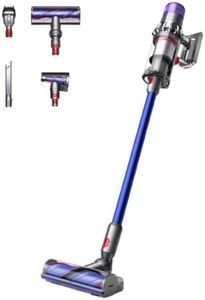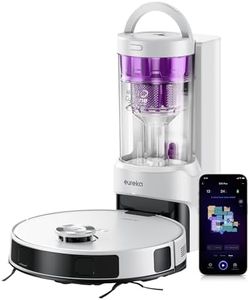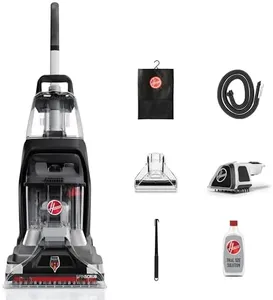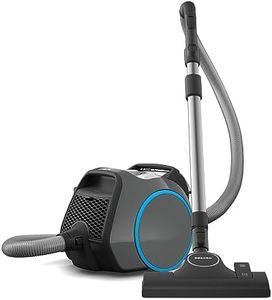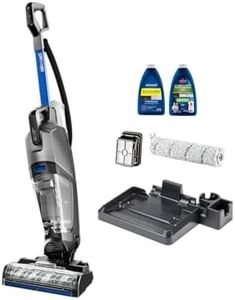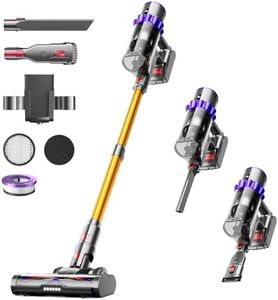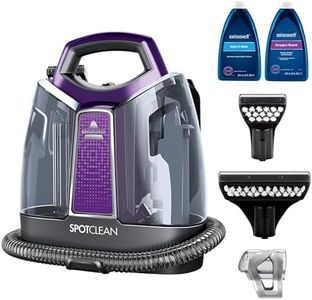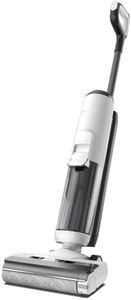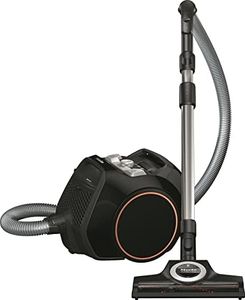We Use CookiesWe use cookies to enhance the security, performance,
functionality and for analytical and promotional activities. By continuing to browse this site you
are agreeing to our privacy policy
10 Best Budget Vacuum Cleaners
From leading brands and best sellers available on the web.By clicking on a link to a third party's website, log data is shared with that third party.
Buying Guide for the Best Budget Vacuum Cleaners
Choosing a vacuum cleaner can seem overwhelming, but breaking things down into a few key features will help you find the right fit. First, think about where and how often you'll use it—different spaces and surfaces have different needs. It's smart to focus on features that fit your lifestyle, like if you have pets, allergies, lots of carpet, or mostly hard floors. Understanding the main specifications will make your choice much easier and help you avoid paying for features you won’t use.Suction PowerSuction power is a measure of how effectively the vacuum can pick up dirt and debris. This is important because better suction clears surfaces more thoroughly, especially on carpets. Suction is often measured in watts or air watts, but sometimes you'll just see it mentioned as 'high' or 'low.' Lower suction might be enough for hard floors or light messes, medium is good for most homes with a mix of surfaces, and high suction is best if you have deep carpets or pets. Think about your floor type and how much cleaning power you really need so you don’t end up with something too weak or unnecessarily powerful.
Filtration SystemThe filtration system keeps dust and allergens inside the vacuum rather than blowing them back into your room. This matters most if you have allergies, asthma, or pets. Basic models may have a simple filter, medium ones use multi-stage filters, and higher-end options offer HEPA (High-Efficiency Particulate Air) filtration, which traps tiny particles. If you’re sensitive to dust or have pets, aim for a better filtration system; otherwise, a standard filter should be fine.
CapacityCapacity refers to how much dust and debris the vacuum’s bin or bag can hold. A large capacity means you’ll empty it less often—ideal for big homes or heavy cleaning. Smaller capacity is fine for small spaces or occasional use and makes the vacuum lighter. Decide how often you want to empty it and how much space you have; frequent cleaners or larger homes benefit from a bigger bin, while smaller apartments can do with a compact size.
Weight and ManeuverabilityThe weight and how easily you can move the vacuum make a big difference in your experience, especially if your home has stairs or you need to move it around a lot. Light vacuums are easier to carry and handle but may come with smaller capacities and less power. Heavier models often clean deeply and hold more but can be tiring to use. Pick a lighter model if you have stairs or mobility concerns, or a heavier one if it will mostly stay on one level and you need strong cleaning.
Attachments and ToolsAttachments and tools help you clean more than just floors—they tackle upholstery, stairs, and tight corners. Some vacuums come with just a crevice tool, while others offer brushes for pet hair, mini-motorized heads, or flexible hoses. If you have pets, kids, or need to clean furniture, look for more attachments. For straightforward floor cleaning, basic tools will do the job.
Corded vs. CordlessCorded vacuums offer unlimited runtime as long as they’re plugged in and usually have more consistent power, but you have to deal with cords. Cordless models are easier to move and store, but battery life limits how long you can clean at one time. If you prefer flexibility and quick cleanups, cordless is convenient. For larger areas or longer sessions, corded might be better.
